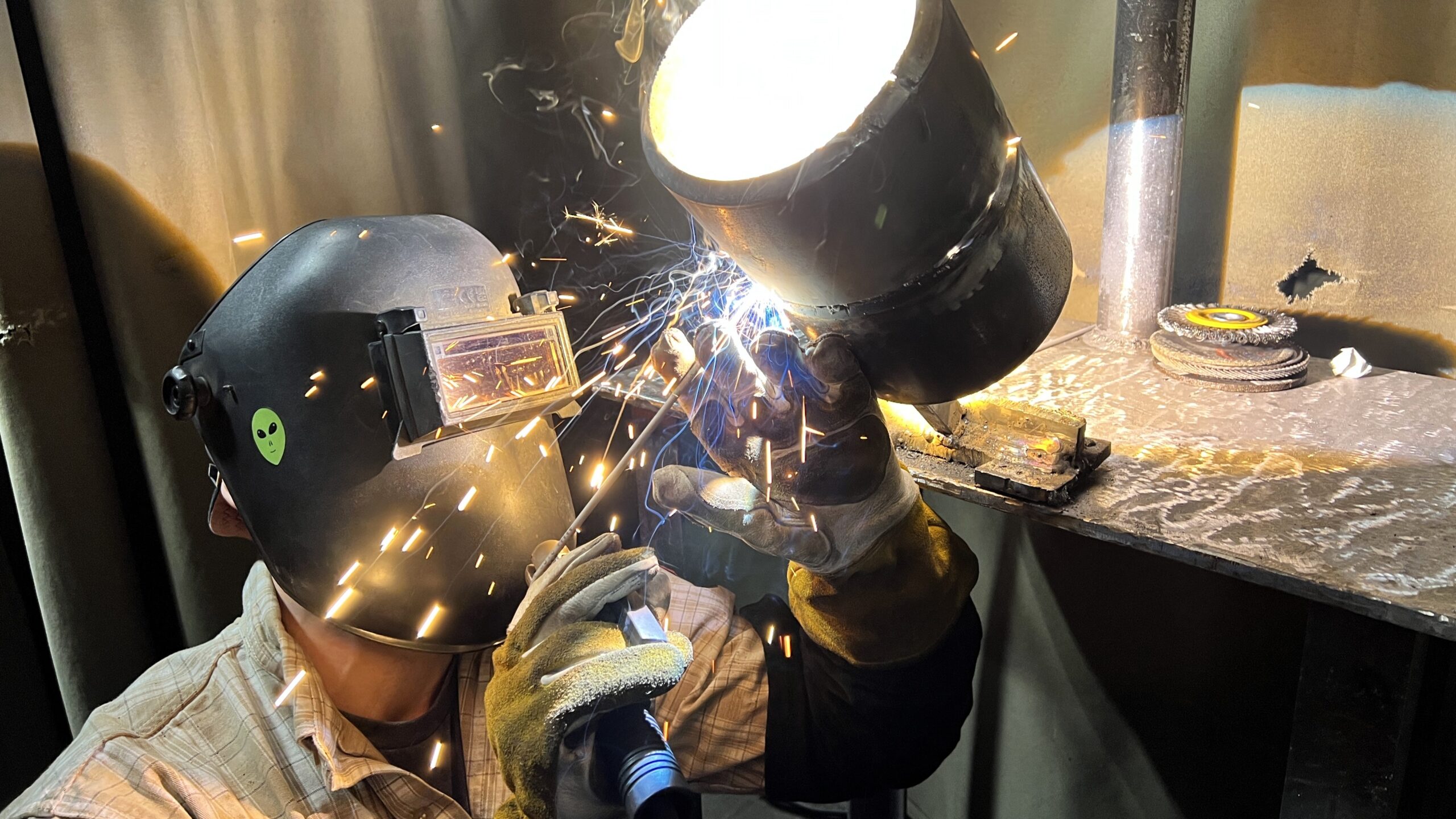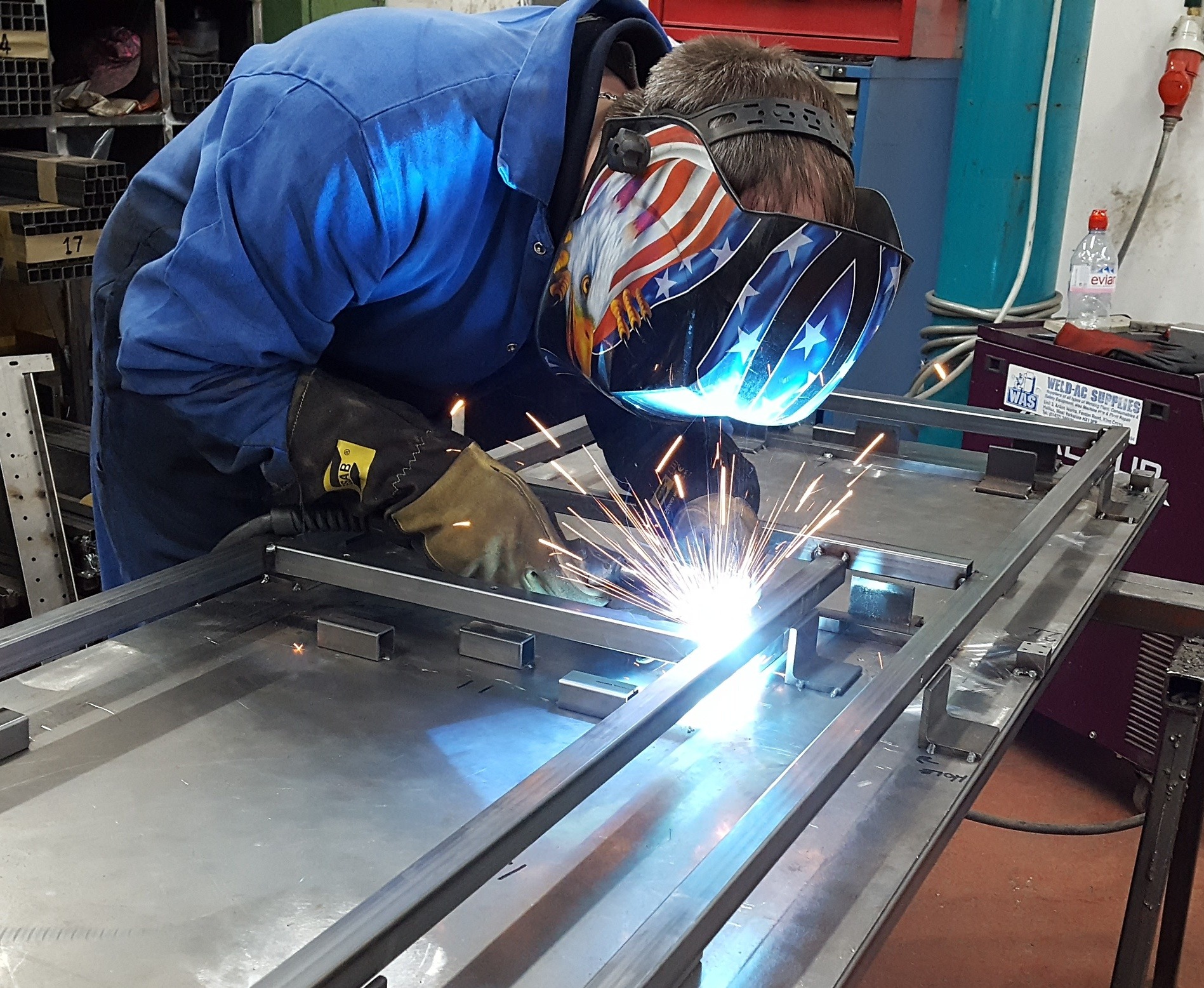Common Welding Repair Issues and Exactly How to Address Them Successfully
Welding fixings frequently come across a range of issues that can endanger the integrity of the final product. Common troubles include insufficient penetration, porosity, and imbalance, to name a few. Each problem presents unique challenges that require particular methods for resolution. Comprehending these issues is crucial for welders intending to enhance their end results and abilities. This conversation will certainly check out these common welding fixing issues and efficient techniques to address them.
Poor Penetration
Insufficient infiltration takes place when the weld steel stops working to completely fuse with the base material, leading to weak joints and prospective structural failings. This problem often comes from inadequate heat input, inaccurate electrode angle, or inappropriate welding speed. Welders may come across poor infiltration as a result of a mistake of the essential parameters for a particular material density or kind. Additionally, contamination on the base product's surface area can hinder efficient bonding, intensifying the problem. To attend to inadequate penetration, welders should ensure ideal setups on their devices and preserve a clean work surface area. Normal evaluation of welds is advised to identify any kind of deficiencies early, permitting for prompt improvements and the avoidance of endangered structural honesty in bonded assemblies.
Porosity
Porosity is a typical defect in bonded joints that materializes as tiny gas bubbles caught within the weld metal. This flaw can jeopardize the honesty of the weld, leading to lowered stamina and potential failure under anxiety. Montana Mobile Welding and Repair Fabrication. Porosity usually arises from contamination, wetness, or inappropriate welding methods, which enable gases to get away into the molten weld swimming pool. To deal with porosity, welders must guarantee appropriate surface area preparation, keep a clean working atmosphere, and utilize suitable welding criteria. Additionally, choosing the ideal filler product and securing gas can mitigate gas entrapment. Regular examination and testing of welds can help identify porosity early, guaranteeing timely corrective activities are taken, consequently maintaining the top quality and reliability of the welded framework
Imbalance
Imbalance in welding can develop from numerous variables, consisting of improper arrangement and thermal expansion. Understanding the source is crucial for effective resolution. Numerous adjustment methods are available to straighten parts and guarantee structural stability.
Reasons for Imbalance
Welding misalignment often originates from a selection of underlying issues that can jeopardize structural stability. One primary reason is improper fit-up of elements prior to welding, which can cause gaps and irregular surfaces. Variations in thermal development during the welding process can likewise result in distortion, particularly if the materials being signed up with have various coefficients of growth. In addition, insufficient fixturing and securing might stop working to hold components securely in position, resulting in movement throughout welding. Badly kept tools, including welding devices and tools, may present inconsistencies in the weld bead, additional adding to misalignment. Finally, driver error, coming from inadequate training or experience, can likewise play a considerable function in producing misaligned welds.
Modification Techniques Offered
Resolving misalignment successfully needs a combination of rehabilitative methods tailored to the particular problems at hand. One usual technique is making use of jigs or fixtures to hold elements in the right setting during welding, making certain regular positioning. Additionally, preheating the products can help in reducing distortion and improve fit-up. For significant misalignment, mechanical adjustment methods, such as making use of hydraulic jacks or clamps, can be utilized to deal with the position before welding. Post-weld warmth therapy may likewise be required to relieve anxieties created by misalignment. Mindful examination and adjustment throughout the configuration phase can protect against imbalance problems from ending up being significant troubles, advertising a smoother welding process and boosting total architectural stability.
Distortion
Distortion is a typical obstacle in welding that can emerge from numerous variables, including unequal heating & cooling. Understanding the reasons for distortion is crucial for executing efficient avoidance techniques. Resolving this concern not just enhances architectural stability however also boosts the total quality of the weld.
Sources of Distortion
When subjected to the extreme warmth of welding, materials frequently undertake modifications that can bring about distortion. This phenomenon largely develops from thermal growth and contraction throughout the welding procedure. As the weld area warms up, the material increases; upon air conditioning, it acquires, which can create internal anxieties. On top of that, irregular heating throughout a workpiece can aggravate these tensions, leading to bending or flexing. The type of material also plays a significant role; steels with varying thermal conductivity and coefficients of growth may react in a different way, bring about unforeseeable distortions. Inadequate joint design and insufficient fixturing can contribute to misalignment throughout welding, raising the likelihood of distortion. Recognizing these reasons is important for effective best budget welder welding repair work and avoidance techniques.
Avoidance Techniques
Efficient avoidance strategies for distortion throughout welding concentrate on managing warmth input and making certain appropriate joint layout. Keeping a constant warmth input assists to minimize thermal expansion and tightening, which can bring about distortion. Using methods such as preheating the workpiece can also reduce the temperature gradient, promoting consistent heating. Additionally, selecting ideal joint layouts, such as T-joints or lap joints, can improve stability and decrease tension concentrations. Carrying out correct fixturing to secure the work surfaces in area further help in preserving positioning during the welding procedure. Staggered welding sequences can disperse warmth more uniformly, stopping local distortion. By applying these approaches, welders can significantly lower the probability of distortion and improve the total quality of their welds.
Breaking
Breaking is a typical concern encountered in welding repair work, frequently resulting from various aspects such as incorrect air conditioning rates, product selection, or insufficient joint preparation. The event of splits can considerably jeopardize the integrity of the weld, resulting in potential failures throughout operation. To address this problem, welders have to initially analyze the origin creates, making certain that products are suitable and suitably picked for the specific application. Additionally, regulating the cooling price throughout the welding procedure is crucial; quick cooling can generate stress and anxiety and lead to fracturing. Correct joint layout and preparation also add to lessening the threat. Carrying out these approaches can enhance weld quality and resilience, eventually reducing the possibility of fracturing in ended up weldments.

Incomplete Combination
A substantial concern in welding repair work is insufficient combination, which happens when the weld metal does not sufficiently bond with the base product or previous weld passes - Montana Mobile Welding and Repair. This flaw can cause weaknesses in the joint, possibly compromising the stability of the welded framework. Variables adding to insufficient fusion consist of not enough heat input, improper welding strategy, and contamination of the surfaces being joined. why not try this out To resolve this concern effectively, welders ought click here for more info to guarantee proper pre-weld cleaning and surface area prep work, as well as readjust their welding parameters to accomplish sufficient infiltration and fusion. Regular inspection throughout the welding process can additionally aid determine incomplete combination early, allowing for prompt rehabilitative steps to improve the general top quality of the weld
Overheating
While welding repair services can boost structural stability, overheating provides a substantial obstacle that can bring about material destruction. Too much heat throughout welding can change the mechanical residential or commercial properties of metals, leading to lowered strength, raised brittleness, and warping. This sensation is particularly vital in high-stress applications where architectural reliability is vital. Determining getting too hot can entail visual evaluations for staining or distortion, along with checking temperature level during the welding procedure. To reduce the risks related to overheating, welders must use ideal methods, such as controlling warm input, changing travel rate, and utilizing ideal filler materials. In addition, carrying out pre- and post-weld warmth therapies can assist bring back product homes and boost the overall high quality of the fixing, ensuring long-term performance and safety and security.
Frequently Asked Questions
What Are the Typical Indications of a Welding Flaw?

How Can I Evaluate My Welds for Top quality?
To evaluate welds for quality, one can utilize visual assessments, ultrasonic testing, and radiographic approaches. Each technique guarantees architectural stability, identifies defects, and validates adherence to specified standards, ultimately improving the reliability of the welded joints.
What Safety and security Precautions Should I Take While Welding?
When welding, one ought to prioritize safety by using appropriate individual protective devices, making sure appropriate air flow, safeguarding combustible materials away, keeping a tidy workspace, and understanding surroundings to avoid mishaps and injuries.
Can I Fix a Weld Without Redoing the Entire Joint?
Fixing a weld without remodeling the entire joint is possible, depending on the damage (Montana Mobile Welding and Repair Fabrication). Techniques such as grinding, adding filler product, or utilizing a welding process can efficiently deal with certain problems while preserving the surrounding framework
What Tools Are Important for Reliable Welding Fixes?
Important devices for efficient welding repair work include a welding machine, cable brush, grinder, protective equipment, clamps, and filler products. Each tool plays a vital function in ensuring high quality and safety and security during the repair process. Porosity usually occurs from contamination, moisture, or improper welding methods, which allow gases to run away into the molten weld pool. Inadequately conserved equipment, including welding devices and tools, may introduce incongruities in the weld bead, additional adding to misalignment. When subjected to the intense warmth of welding, products frequently undergo adjustments that can lead to distortion. Splitting is an usual concern run into in welding fixings, commonly resulting from different elements such as incorrect cooling rates, material option, or insufficient joint preparation. A considerable problem in welding fixings is insufficient combination, which happens when the weld steel does not properly bond with the base product or previous weld passes.